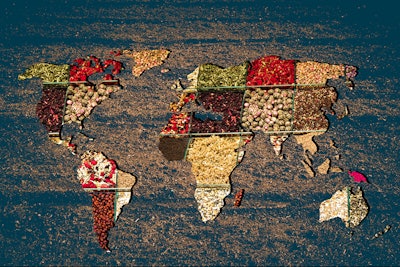
The benchmark for world food commodity prices was stable overall in November, though a closer look at separate food indexes shows some ups and downs. Lower cereal prices, for example, were offset by higher prices for vegetable oils, according to the Food and Agriculture Organization (FAO) of the United Nations.
The FAO Food Price Index (FFPI), which tracks monthly changes in the international prices of a set of globally traded food commodities, averaged 120.4 points in November, unchanged from October’s level. Year-over-year, prices have dropped 10.7%.
November’s FAO Cereal Price Index decreased by 3.0% from the previous month, though not all grain prices fell at the same rate—prices for coarse grains dropped by 5.6% while wheat prices declined by 2.4% and rice remained stable overall.
FAO released a separate report today in which it raised its forecast for the season’s cereal harvest. World cereal production is expected to reach 2.823 billion tonnes, up 0.9% over last year and 10.3 million tonnes above the previous record high in 2021. Russia and Turkey both saw an uptick in wheat output, as was the case for maize in the U.S.






















